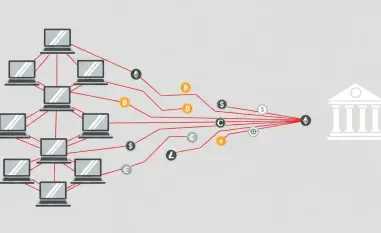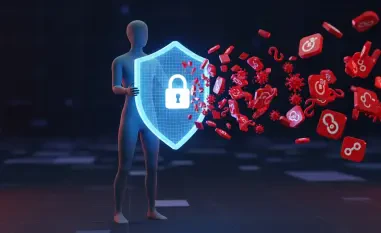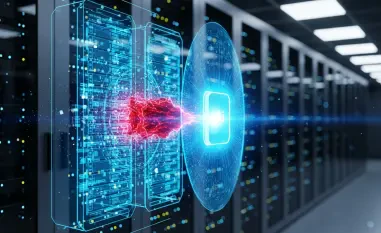In today’s fast-paced digital world, cybersecurity threats are more sophisticated than ever, adapting to challenges and finding vulnerabilities where least expected. Malik Haidar, a specialist with extensive expertise in identifying and mitigating cyber threats in large-scale organizations, provides us with insights into recent developments in cybersecurity. His unique approach ties business considerations into cyber strategies, making him a valuable voice in the realm of analyzing threats like ResolverRAT and others impacting various industries.
What is ResolverRAT and how was it discovered?
ResolverRAT is a newly identified remote access trojan, specifically targeting healthcare and pharmaceutical sectors through crafted phishing campaigns. Its discovery by cybersecurity researchers highlights the sophisticated methods used in these attacks, emphasizing the need for vigilance in high-stakes environments like healthcare, where the integrity and confidentiality of data are paramount.
Can you explain the tactics used by the threat actor behind ResolverRAT to target the healthcare and pharmaceutical sectors?
The threat actor employs fear-based lures in phishing emails, carefully crafted to induce panic or urgent action among recipients, ultimately leading them to click on malicious links. These links initiate a download and execution chain for ResolverRAT, showcasing the actor’s strategic use of psychological pressure and social engineering.
How do phishing emails in the ResolverRAT campaign exert pressure on recipients to click malicious links?
Phishing emails in this campaign are designed with urgency and often tailored to the recipient’s locality, using localized languages and culturally relevant messaging. This approach increases the likelihood of recipient engagement and action, demonstrating a keen understanding of human behavior and its exploitation in cyber attacks.
How do the ResolverRAT campaigns relate to previous phishing campaigns involving Lumma and Rhadamanthys?
These campaigns share infrastructure and delivery methods, hinting at an evolutionary step or common resources between the threats. The overlap with prior campaigns distributing information stealer malware like Lumma and Rhadamanthys suggests a pattern of continued refinement in phishing tactics among certain cybercriminal circles.
What are some challenges Microsoft faces in addressing the 125 flaws patched recently?
Microsoft faces the immense task of prioritizing vulnerabilities based on potential impact and severity, as evidenced by the recent patching of 125 flaws. This includes a mix of privilege escalation and remote code execution vulnerabilities, requiring a diligent balancing act to ensure the most critical fixes are addressed promptly to protect users effectively.
Which vulnerability in Microsoft’s recent patches is under active exploitation and what are the implications?
The actively exploited vulnerability, CVE-2025-29824, poses significant risk through privilege escalation, allowing attackers to gain elevated access and potentially control affected systems. Its active exploitation highlights the urgent need for timely patching and the continuous nature of threat management in software security.
Can you discuss the significance of the actively exploited Windows CLFS vulnerability?
The Windows CLFS vulnerability is particularly concerning due to its elevation of privilege aspect, which threatens network security by potentially allowing unauthorized access levels. Such vulnerabilities create openings for damaging intrusions, typically leading to broader exploitation if not swiftly mitigated.
What is the Anubis backdoor and how is it connected to FIN7?
Anubis is a Python-based malware connected to FIN7, enabling remote access to compromised Windows systems. This backdoor exemplifies the group’s evolving toolkit, allowing for the execution of shell commands and system operations, facilitating more intricate cybercrime activities and aligning with FIN7’s shift towards ransomware.
In what ways has FIN7 evolved in its cybercrime activities, particularly concerning ransomware?
FIN7 has advanced from data exfiltration and initial access tactics to becoming a ransomware affiliate, expanding their operational scope and monetization strategies. This evolution reflects the broader movement in cybercrime where financial gains are increasingly pursued through more direct and impactful methods.
What tactics did Google use to address the Chrome 0-Day vulnerability targeting Russian entities?
Google’s response involved quick identification and patching of the Chrome 0-Day vulnerability, which had been utilized in sophisticated phishing attacks. The vulnerability was addressed through updates that counter efforts to breach the browser’s sandbox, showcasing Google’s commitment to fortifying browser security in real-time.
How are affiliates of RansomHub connected to other ransomware groups like Medusa and Play?
These affiliates share tools such as the EDRKillShifter, used to disable endpoint detection and response software, a tactic indicating shared methodologies or cooperative strategies among ransomware groups. This connection underscores an intricate network within the ransomware ecosystem, facilitating coordinated attempts to bypass security defenses.
What is the function of the EDRKillShifter tool, and why is it significant in ransomware attacks?
EDRKillShifter is designed to terminate endpoint detection systems, an essential move for ransomware attacks to proceed unnoticed. This tool’s ability to neutralize protective layers emphasizes its importance in maintaining stealth during the infiltration and execution phases of ransomware attacks.
How does the tactic Bring Your Own Vulnerable Driver (BYOVD) facilitate ransomware infiltration?
BYOVD involves using a legitimate but flawed driver to disable security tools, enabling ransomware to proceed without interruption. This tactic covertly undermines host defenses, showcasing the clever manipulation of existing vulnerabilities to achieve unfettered access and operation within targeted environments.
Who is RedCurl and what noteworthy shift has this group made in their attack strategy?
Originally focused on corporate espionage, RedCurl has transitioned to deploying ransomware, marking a significant strategic shift. Their use of the new ransomware strain, QWCrypt, signifies an adaptation in their operational focus toward more lucrative and disruptive forms of cybercrime.
What is QWCrypt and how does it represent a change for the RedCurl group’s operations?
QWCrypt introduces a new ransomware approach for RedCurl, aligning them with broader trends in cyberactivity where data encryption becomes a tool of negotiation and extortion. This move from espionage to ransomware reflects changing priorities in the cyber landscape where direct financial incentives drive new methodologies.
How did RedCurl previously conduct corporate espionage attacks before shifting to ransomware?
RedCurl’s corporate espionage involved spear-phishing with HR-themed lures to initiate malware deployments. This approach capitalized on targeted infiltration and data extraction from various global organizations, forming the groundwork before advancing into ransomware tactics.
What are the potential impacts of RedCurl’s deployment of QWCrypt on targeted organizations?
The deployment of QWCrypt by RedCurl introduces increased financial and operational risk for organizations, manifesting in potential data breaches, downtime, and extortion. This escalation in threat complicates defensive strategies and underscores the need for robust and dynamic cybersecurity measures to counter evolving ransomware threats.
What is your forecast for emerging cybersecurity threats like these in the future?
With cyber threats becoming more sophisticated, the trend towards hybrid attacks—combining elements like ransomware with espionage—will likely increase. Organizations need to adopt comprehensive, proactive security measures to stay ahead of evolving tactics and understand the deep interconnectivity between various threat actors.













